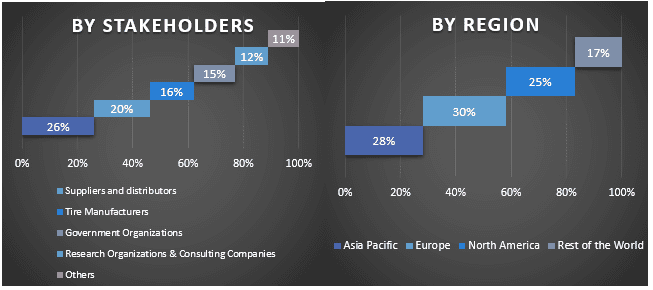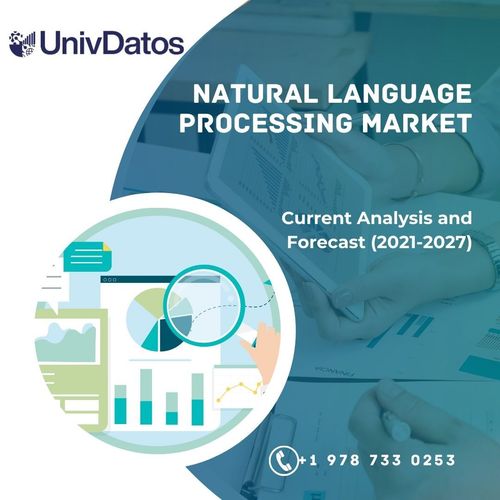Enterprise Application Market: Current Analysis and Forecast (2022-2030)
Emphasis on Services (Customer Relation Management (Crm), Enterprise Resource Planning (Erp), Supply Chain Management (Scm), Enterprise Asset Management, Others); Deployment Mode (On-Premise, Cloud); Industries (Communications, Automotive, Information Technology, Energy & Utilities, Others); and Region/Country

Enterprise Application Market was valued at USD X million in 2021 & is expected to grow at a CAGR of 3.0% from 2022-2030. Owing to increasing adoption of cloud-based solutions in all-size businesses. The integration of computer systems that manage all aspects of an organization’s operations is the goal of enterprise applications, which aim to make collaboration and work coordination across the organization easier. Core business processes like sales, accounting, finance, human resources, inventory, and manufacturing will be integrated. These applications boost workplace productivity and may necessitate a robust computing platform. Employees can quickly access the tools, resources, or data they need to do their jobs if computers are fast. A more intricate framework might require quicker programming capacities. In addition, advancements in the digital transformation industry and growth in the 5G technology are propelling the demand of this market. For instance, In 2022, CRMNEXT, a worldwide CRM arrangement supplier for monetary administrations, reported an organization with Wescom Assets Gathering, an innovation arrangements supplier, to smooth out their IT tasks. With this securing, they will give credit associations a client relationship the executives answer for monetary organizations.
Insights Presented in the Report
“Amongst services, the ERP segment will also attain a considerable share of the market during the forecast period.”
Based on services, the market is segmented into customer relationship management (CRM), enterprise resource planning (ERP), supply chain management (SCM), enterprise asset management, and others. Amongst these, the ERP segment will also attain a considerable share of the market during the forecast period. ERP is frequently used by businesses in the supply chain to keep track of all manufacturing and distribution processes. However, ERP is also being utilized by a variety of different industries, including the hospitality, construction, healthcare, and nonprofit sectors. ERP is advantageous for businesses that need to manage staff, customers, and inventory.
“Amongst deployment mode, the cloud segment holds the highest share of the market in the forecast period.”
By Deployment mode, the market is bifurcated into on-premise and cloud. Among these, the cloud segment captured a significant share of the market in 2021. The primary motivation behind why cloud computing is significant for business is that it permits associations to scale, keep up with adaptability, and spotlight their endeavors on business tasks – not overseeing complex IT frameworks. Cloud technology provides a pattern for data storage that is separated. Hence, finding legitimate information with the least exertion becomes simpler. It saves time and labor supply for any business. Cloud computing services also provide real benefits to established and large businesses.
“Asia Pacific holds the second largest share of the Enterprise Application market in 2021.”
The geographic expansion of businesses would present a lucrative opportunity for the rapid growth of the enterprise application market as a result of rapidly evolving business models. Competitive advantages over traditional business software and the rising adoption of a customer-centric approach by organizations are driving the market for enterprise applications. Moreover, developing utilization of cloud-based versatile applications drives market development worldwide. Moreover, the growing number of start-ups of businesses as well as the technological industry is highly accelerating the demand of this market in this region. For instance, recently The launch of ZEBOX Asia Pacific in Singapore was celebrated today by the CMA CGM Group, a global leader in logistics solutions for the maritime, land, and air sectors. Through the global startup accelerator for excellence and sustainability in supply chain, logistics, transportation, and energy, CMA CGM, the founding partner of ZEBOX, has continued to innovate.
Enterprise Application Market Report Coverage

Reasons to buy this report:
- The study includes market sizing and forecasting analysis validated by authenticated key industry experts.
- The report presents a quick review of overall industry performance at one glance.
- The report covers an in-depth analysis of prominent industry peers with a primary focus on key business financials, product portfolios, expansion strategies, and recent developments.
- Detailed examination of drivers, restraints, key trends, and opportunities prevailing in the industry.
- The study comprehensively covers the market across different segments.
- Deep dive regional level analysis of the industry.
Customization Options:
The global Enterprise Application market can further be customized as per the requirement or any other market segment. Besides this, UMI understands that you may have your own business needs, hence feel free to contact us to get a report that completely suits your requirements
Table of Contents
Research Methodology for the Enterprise Application Market Analysis (2022-2030)
Analyzing the historical market, estimating the current market, and forecasting the future market of the global enterprise application market were the three major steps undertaken to create and analyze the adoption of enterprise application in major regions globally. Exhaustive secondary research was conducted to collect the historical market numbers and estimate the current market size. Secondly, to validate these insights, numerous findings and assumptions were taken into consideration. Moreover, exhaustive primary interviews were also conducted, with industry experts across the value chain of the global enterprise application market. Post assumption and validation of market numbers through primary interviews, we employed a top-down/bottom-up approach to forecasting the complete market size. Thereafter, market breakdown and data triangulation methods were adopted to estimate and analyze the market size of segments and sub-segments of the industry pertains to. Detailed methodology is explained below:
Analysis of Historical Market Size
Step 1: In-Depth Study of Secondary Sources:
Detail secondary study was conducted to obtain the historical market size of the Enterprise Application market through company internal sources such as annual reports & financial statements, performance presentations, press releases, etc., and external sources including journals, news & articles, government publications, competitor publications, sector reports, third-party database, and other credible publications.
Step 2: Market Segmentation:
After obtaining the historical market size of the enterprise application market, we conducted a detailed secondary analysis to gather historical market insights and share for different segments & sub-segments for major regions. Major segments are included in the report by services, deployment mode, and industries. Further country-level analyses were conducted to evaluate the overall adoption of testing models in that region.
Step 3: Factor Analysis:
After acquiring the historical market size of different segments and sub-segments, we conducted a detailed factor analysis to estimate the current market size of the enterprise application market. Further, we conducted factor analysis using dependent and independent variables such as services, deployment mode, and industries of the enterprise application market. A thorough analysis was conducted of demand and supply-side scenarios considering top partnerships, mergers and acquisitions, business expansion, and product launches in the Enterprise Application market sector across the globe.
Current Market Size Estimate & Forecast
Current Market Sizing: Based on actionable insights from the above 3 steps, we arrived at the current market size, key players in the global enterprise application market, and market shares of the segments. All the required percentage shares split, and market breakdowns were determined using the above-mentioned secondary approach and were verified through primary interviews.
Estimation & Forecasting: For market estimation and forecast, weights were assigned to different factors including drivers & trends, restraints, and opportunities available for the stakeholders. After analyzing these factors, relevant forecasting techniques i.e., the top-down/bottom-up approach were applied to arrive at the market forecast for 2028 for different segments and sub-segments across the major markets globally. The research methodology adopted to estimate the market size encompasses:
- The industry’s market size, in terms of revenue (USD) and the adoption rate of the enterprise application market across the major markets domestically
- All percentage shares, splits, and breakdowns of market segments and sub-segments
- Key players in the global enterprise application market in terms of products offered. Also, the growth strategies adopted by these players to compete in the fast-growing market
Market Size and Share Validation
Primary Research: In-depth interviews were conducted with the Key Opinion Leaders (KOLs) including Top Level Executives (CXO/VPs, Sales Head, Marketing Head, Operational Head, Regional Head, Country Head, etc.) across major regions. Primary research findings were then summarized, and statistical analysis was performed to prove the stated hypothesis. Inputs from primary research were consolidated with secondary findings, hence turning information into actionable insights.
Split of Primary Participants in Different Regions

Market Engineering
The data triangulation technique was employed to complete the overall market estimation and to arrive at precise statistical numbers for each segment and sub-segment of the global enterprise application market. Data was split into several segments & sub-segments post studying various parameters and trends in the areas of services, deployment mode, an industries in the global enterprise application market.
The main objective of the Global Enterprise Application Market Study
The current & future market trends of the global enterprise application market were pinpointed in the study. Investors can gain strategic insights to base their discretion for investments on the qualitative and quantitative analysis performed in the study. Current and future market trends determined the market’s overall attractiveness at a regional level, providing a platform for the industrial participant to exploit the untapped market to benefit from a first-mover advantage. Other quantitative goals of the studies include:
- Analyze the current and forecast market size of the enterprise application market in terms of value (USD). Also, analyze the current and forecast market size of different segments and sub-segments.
- Segments in the study include areas of the rail type and application type.
- Define and analysis of the regulatory framework for the enterprise application industry.
- Analyze the value chain involved with the presence of various intermediaries, along with analyzing customer and competitor behaviors of the industry.
- Analyze the current and forecast market size of the enterprise application market for the major region.
- Major countries of regions studied in the report include Asia Pacific, Europe, North America, and the Rest of the World
- Company profiles of the enterprise application market and the growth strategies adopted by the market players to sustain in the fast-growing market.
- Deep dive regional level analysis of the industry
Related Reports
Customers who bought this item also bought










